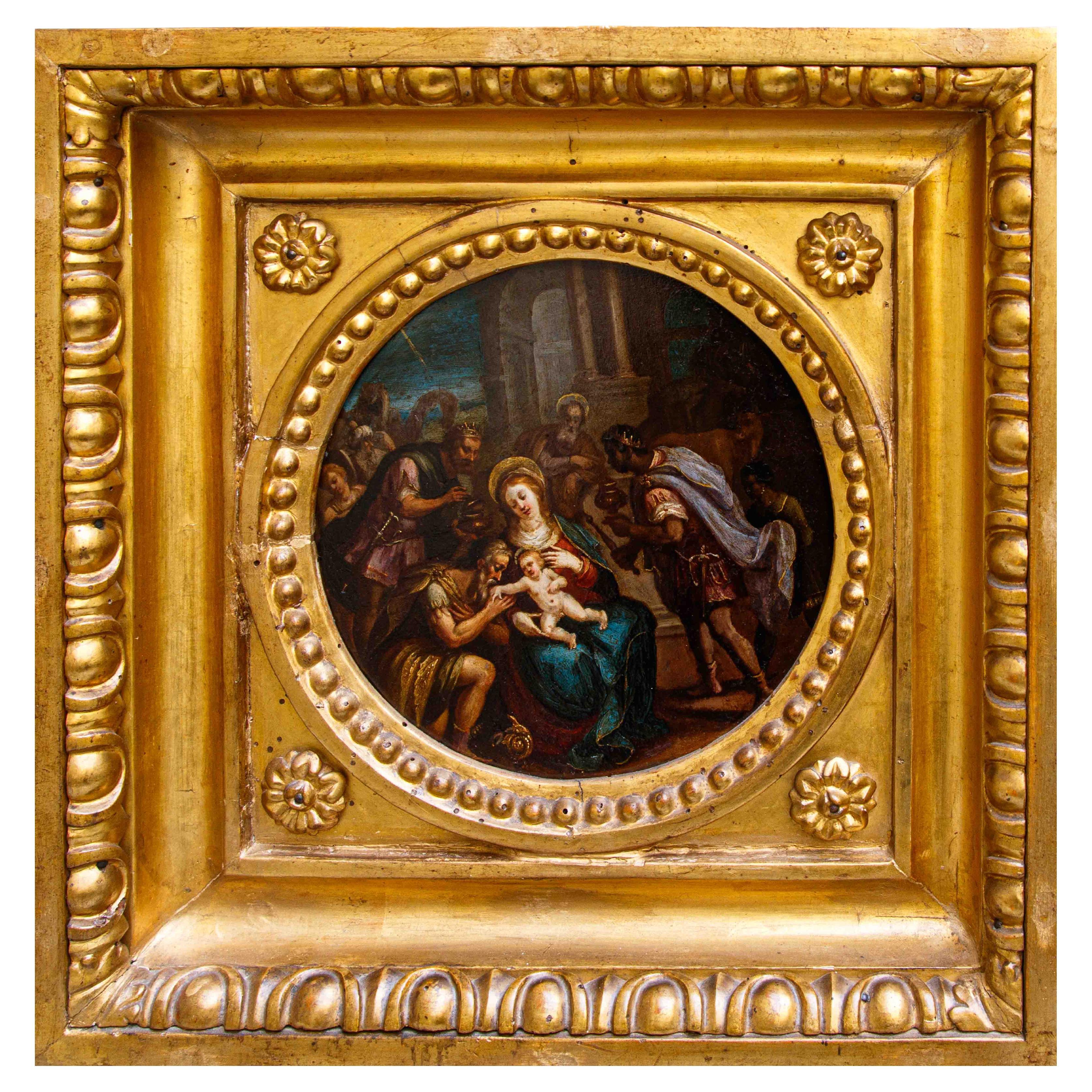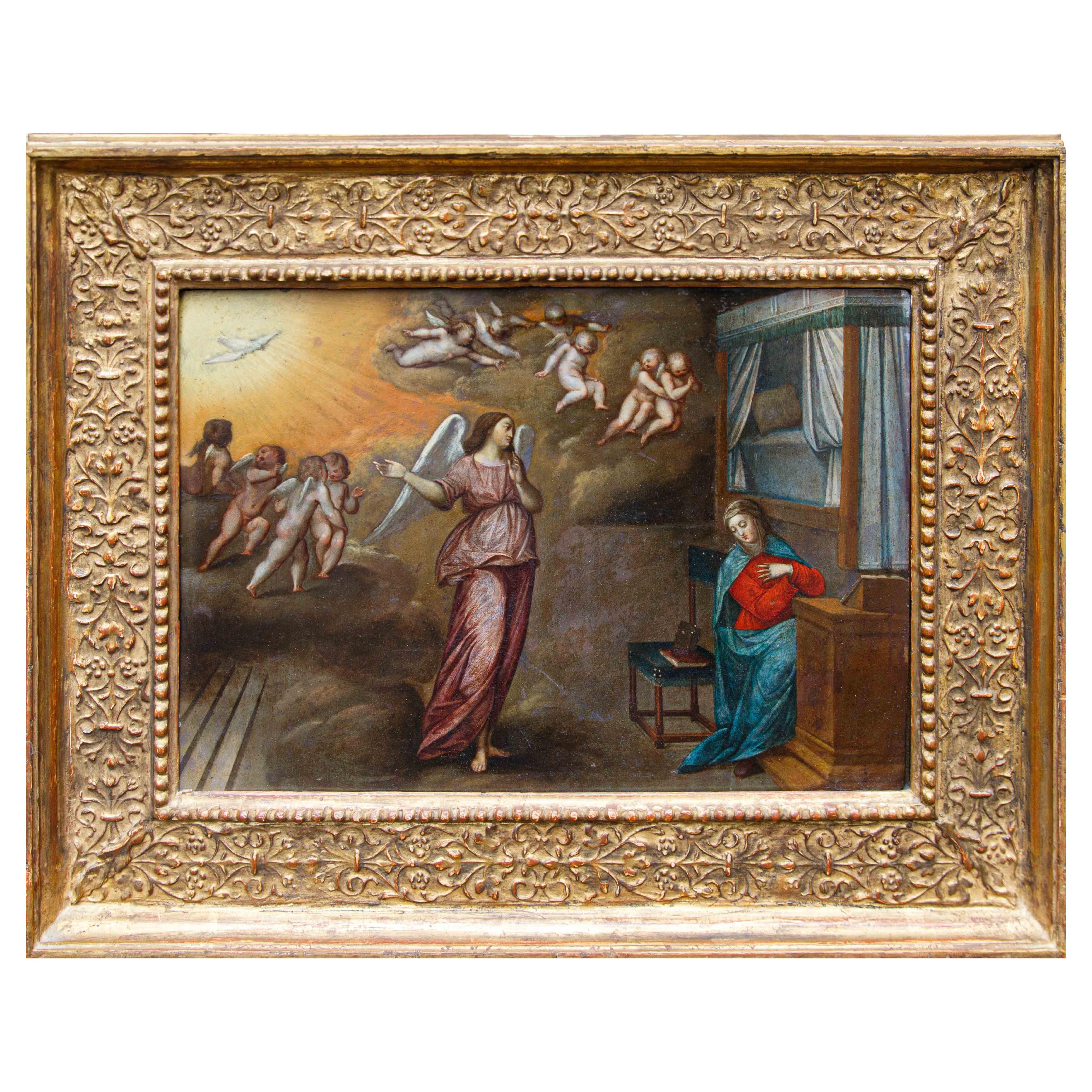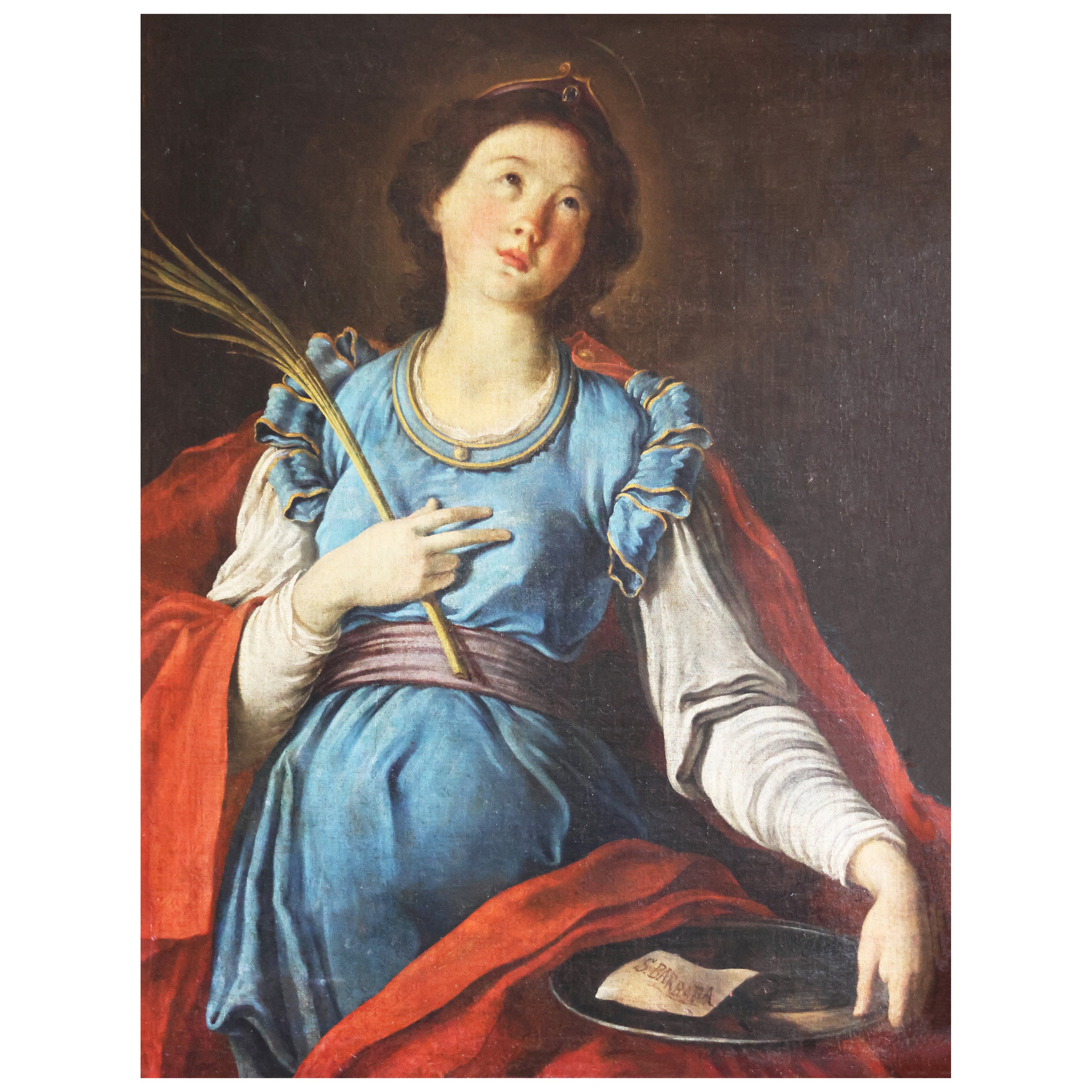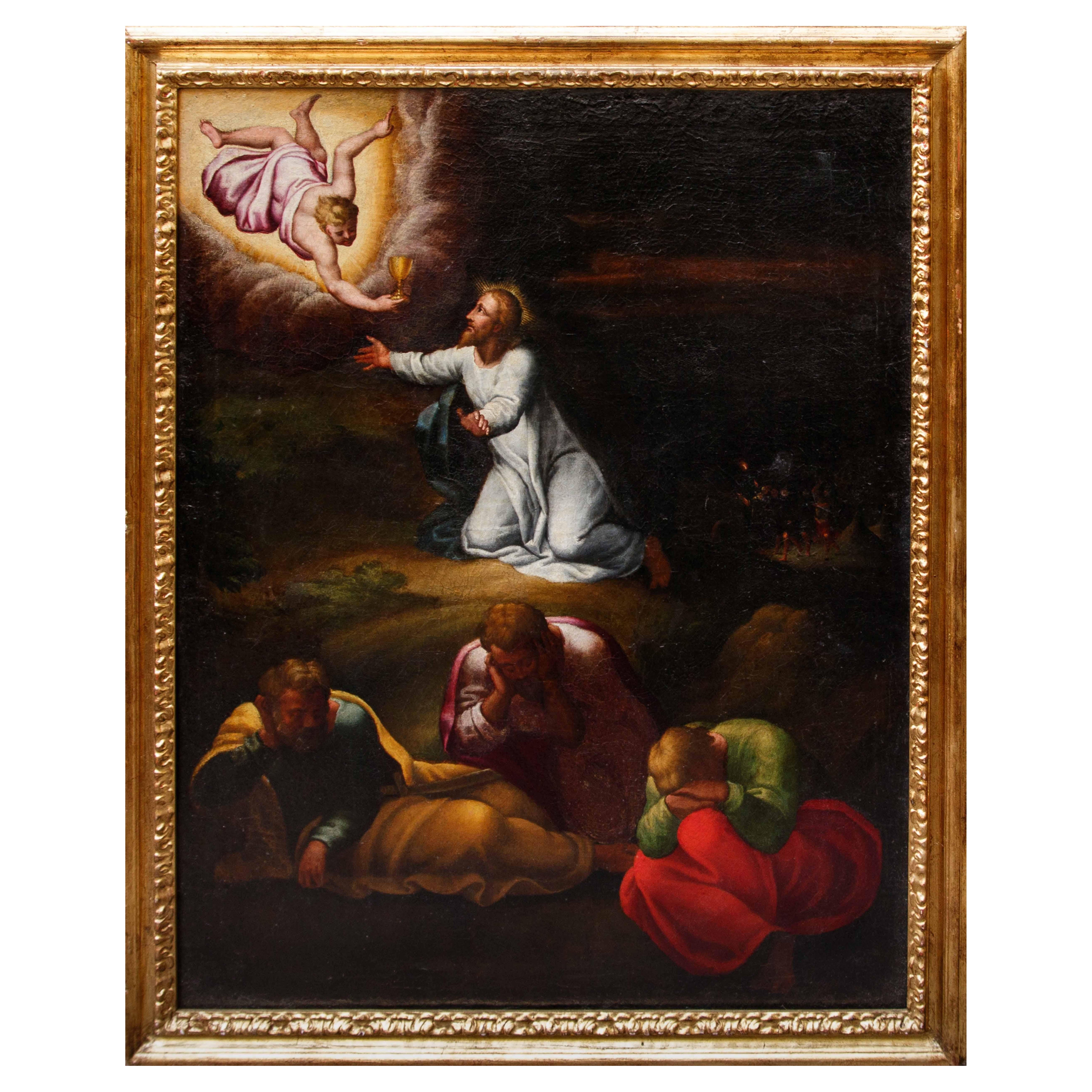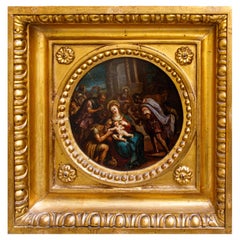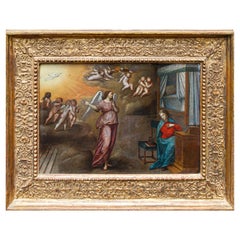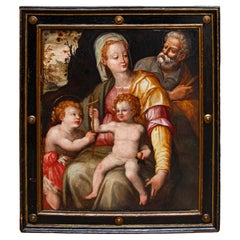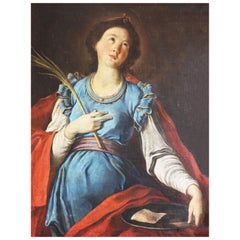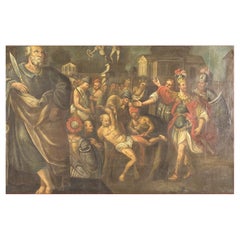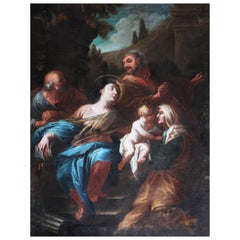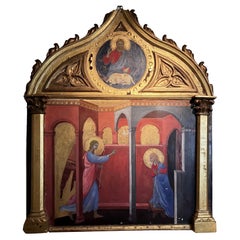Items Similar to 18th century, Russian School, Icon depicting the relics of St. Spyridon
Want more images or videos?
Request additional images or videos from the seller
1 of 8
18th century, Russian School, Icon depicting the relics of St. Spyridon
$2,563.42
£1,933.29
€2,200
CA$3,544.16
A$3,970.05
CHF 2,085.21
MX$48,274.53
NOK 26,405.62
SEK 25,066.03
DKK 16,747.84
About the Item
18th Century, Russian School
Icon depicting the relics of St. Spiridon of Trimiton preserved in the temple of Kerkyra
Tempera on panel, 26.5 x 19 cm
Applied on gilt wood panel, cm tot 38 x 31
St. Spiridion of Trimiton (c. 270 - Dec. 12, 348) was bishop of Trimiton, now Tremetousia, on the island of Cyprus. Spiridion was born into a Christian family in the late 3rd century in Hesse, on the island of Cyprus. It is known that he spent his early years as a cattle herder but that following the death of his wife he devoted his life to religion. He was appointed bishop of his hometown and during the persecution of Christians under Emperor Maximian he was arrested and exiled. According to tradition, Spiridion attended the First Council of Nicaea in 325, advocating the doctrine of Jesus' essential equality with God the Father, but his presence is not documented. He died on December 12 in 348 and was buried in the Temple of the Holy Apostles in Trimitonte. His biography has been handed down by the hagiographer Simeon Metaphrastes and church historians Sozomenus, Tyrannus Rufinus, and Socrates Scholasticus. After the conquest of Cyprus by the Ottoman Empire, his tomb was opened, and the relics taken to Constantinople. Sources claim that her body was incorrupt and smelled of basil, which was considered proof of her sanctity. After the fall of Constantinople in 1453, the priest Geōrgios Kalochairetīs transported the relics to Corfu, which at that time belonged to the Venetian Republic, in 1456 and they were kept by the monk's family and later by the Bulgarians until a special church was built in 1589. The relic of the saint's right hand was given to Pope Clement VIII in 1592 and is kept in Rome in the Church of Santa Maria in Vallicella.
In this eighteenth-century icon, two angels are presented in the act of protecting and guarding the saint's relics at the temple in Kerkyra, Cyprus Island, where the venerated relics were kept before the construction of the place of worship dedicated to the saint in the second half of the sixteenth century.
The uniqueness of the icons is already evident from the preparation of the support on which they are painted. The wooden board itself is a symbol of the cross, while the cloth is a symbol of the mandylion, or the veil of Veronica, or the Shroud; the plaster that is spread over the cloth, the levkas is a symbol of the stone. Icons were painted on wooden boards, usually linden, larch or fir. An excavation, called a "casket" or "ark," was generally made on the inner side of the tablet so as to leave a raised frame on the edges. The icon is not a personal interpretation but a ritual with precise canons to be respected; unlike paintings, whose author's name is often known, the icon must remain anonymous. Theology considered icons to be works of God himself, made through the hands of the iconographer
- Dimensions:Height: 7.49 in (19 cm)Width: 10.24 in (26 cm)Depth: 1.97 in (5 cm)
- Style:Other (Of the Period)
- Materials and Techniques:
- Place of Origin:
- Period:
- Date of Manufacture:18th 18th Century
- Condition:Wear consistent with age and use.
- Seller Location:Milan, IT
- Reference Number:1stDibs: LU5918245120432
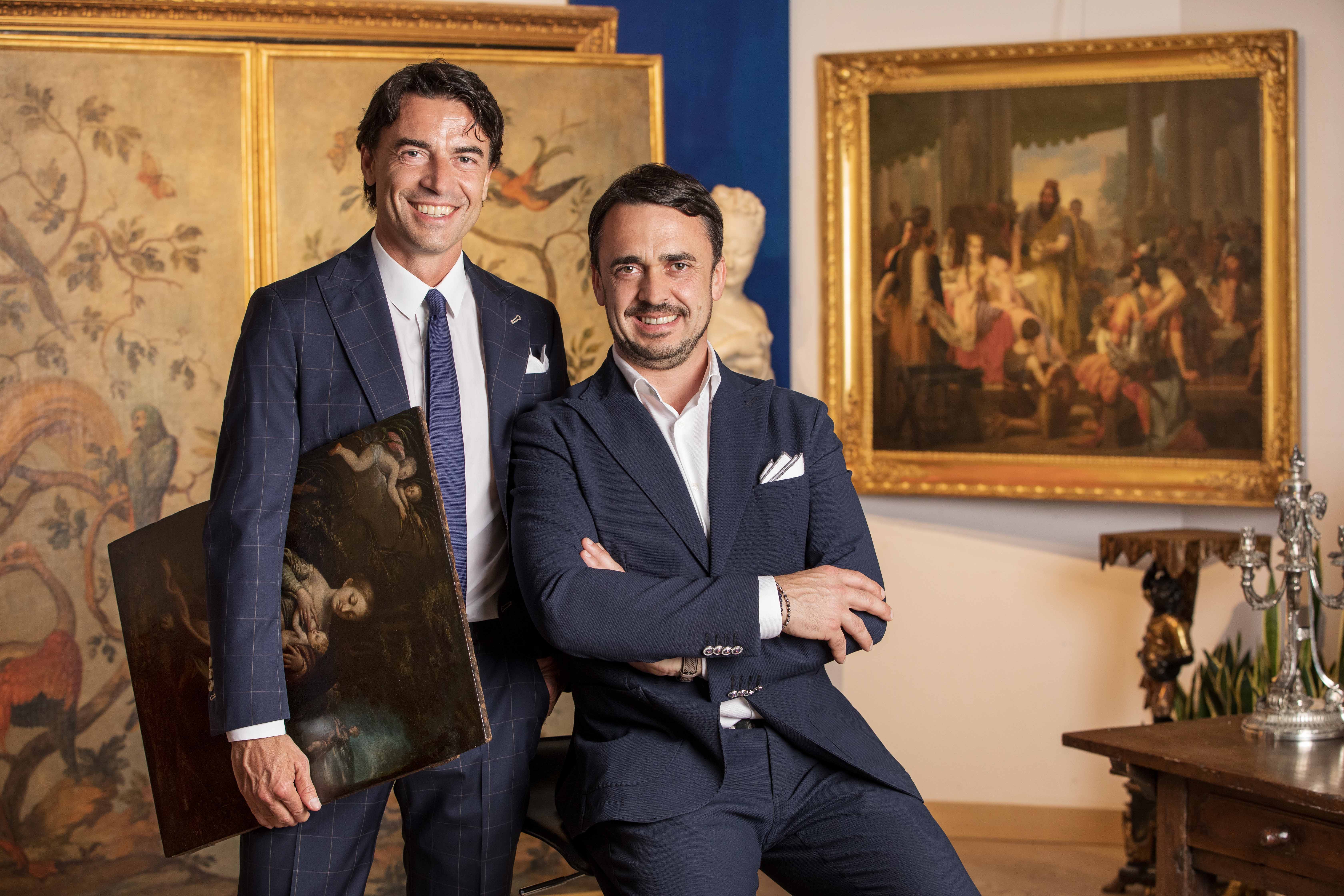
About the Seller
5.0
Vetted Professional Seller
Every seller passes strict standards for authenticity and reliability
Established in 2000
1stDibs seller since 2021
30 sales on 1stDibs
- ShippingRetrieving quote...Shipping from: Milan, Italy
- Return Policy
Authenticity Guarantee
In the unlikely event there’s an issue with an item’s authenticity, contact us within 1 year for a full refund. DetailsMoney-Back Guarantee
If your item is not as described, is damaged in transit, or does not arrive, contact us within 7 days for a full refund. Details24-Hour Cancellation
You have a 24-hour grace period in which to reconsider your purchase, with no questions asked.Vetted Professional Sellers
Our world-class sellers must adhere to strict standards for service and quality, maintaining the integrity of our listings.Price-Match Guarantee
If you find that a seller listed the same item for a lower price elsewhere, we’ll match it.Trusted Global Delivery
Our best-in-class carrier network provides specialized shipping options worldwide, including custom delivery.More From This Seller
View AllEarly 19th century, Icon of the Nativity of the Mother of God
Located in Milan, IT
Inizi XIX secolo
Icon of the Nativity of the Mother of God
Tempera on panel, 54 x 45 cm
The icon in question condenses several scenes from the story of the Virgin, the representa...
Category
Antique 19th Century Russian Other Paintings
Materials
Wood
17th century, Flemish School, Adoration of the Magi
Located in Milan, IT
17th century, Flemish School
Adoration of the Magi
Oil on copper, diam. 19.5 cm
Framed 35.3 x 35.3 cm
Engraved on the back in seventeenth-century calligraphy "Fiamingo"
Vivid wo...
Category
Antique 18th Century and Earlier Dutch Other Paintings
Materials
Copper
Flemish school, 17th century, Annunciation
Located in Milan, IT
Flemish school, 17th century
Annunciation
Oil on copper, 28 x 40.5 cm
Framed, 45 x 57 cm
Category
Antique 18th Century and Earlier Dutch Other Paintings
Materials
Canvas
16th century, Tuscan school, Holy family with St. John
Located in Milan, IT
16th century, Tuscan school
Holy Family with St. John
Oil on panel, 82x71 cm
Framed, 92x81 cm
The term maniera, already in use in the Tuscan area in the 15th century, took on a s...
Category
Antique 18th Century and Earlier Italian Other Paintings
Materials
Wood
Central Italian school, second half of the 16th century, Oration in the Garden
Located in Milan, IT
Central Italian school, second half of the 16th century
Oration in the Garden of Gethsemane
Oil on canvas, 80.5 x 65.5 cm
Christ's prayer in the Garden/Bush of Gethsemane, located...
Category
Antique 18th Century and Earlier Italian Other Paintings
Materials
Canvas
Emilian school of the 17th century, four evangelists
Located in Milan, IT
Scuola emiliana, XVII secolo
Evangelists
(4) oval oil on copper, 9 x 11.5 cm
Framed, 12.5 x 15 cm
The four small copper ovals presented here depict the four evangelists Mark, Mat...
Category
Antique 17th Century Italian Other Paintings
Materials
Copper
You May Also Like
Italian School; Saint Barbara, 18th century, oil on canvas
Located in Brescia, IT
Description
Santa Barbara
Oil on canvas
cm 93x71
The painting depicts St. Barbara, a highly revered Christian saint, especially as the patron saint of miners, gunners and firefighte...
Category
Antique 18th Century Italian Louis XV Paintings
Materials
Canvas
Antique painting Martyrdom of St. Bartholomew from the 17th century
Located in Cesena, FC
Antique painting Martyrdom of St. Bartholomew, by northern European painter of the 17th century
Oil on canvas 100 x 150 cm
Painting based on a subject by Martin de Vos (1532-1603) a...
Category
Antique 17th Century Belgian Paintings
Materials
Canvas
Italian School; Holy Family with St. Anne, 17th-18th century, oil on canvas
Located in Brescia, IT
Description
Holy Family with St. Anne
Oil on canvas
cm 75,5x57
In the center is clearly distinguished the Virgin Mary, seated with a halo, looking at the Child Jesus, who is held by...
Category
Antique Early 18th Century Italian Louis XIV Paintings
Materials
Canvas
Italian Renaissance Style Religious Tempera Painting on Gold Ground Wood Panel
Located in Firenze, IT
This Italian tempera painted on gilt wood gold ground panel is a Tuscan religious artwork in the style of late Renaissance - early Gothic period. The sc...
Category
Antique 19th Century Italian Renaissance Paintings
Materials
Gold Leaf
$6,525 Sale Price
20% Off
Italian 13th century oil on canvas painting "Lot and Daughters"
Located in Cesena, FC
Lot and his daughters, EMILIAN SCHOOL
XVIIIth century
Oil on canvas 175 x 126 cm
Lot and his daughters is one of the themes most frequently encountered by seventeenth-century pain...
Category
Antique 18th Century Italian Baroque Paintings
Materials
Canvas, Paint
18th Century Eastern Orthodox Tempera Icon
Located in Dekalb, IL
Antique tempera Icon depicting St. John the Baptist holding his own head, a reference to his execution by beheading. This came as a result of John publicl...
Category
Antique 17th Century Greek Renaissance Paintings
Materials
Tin
